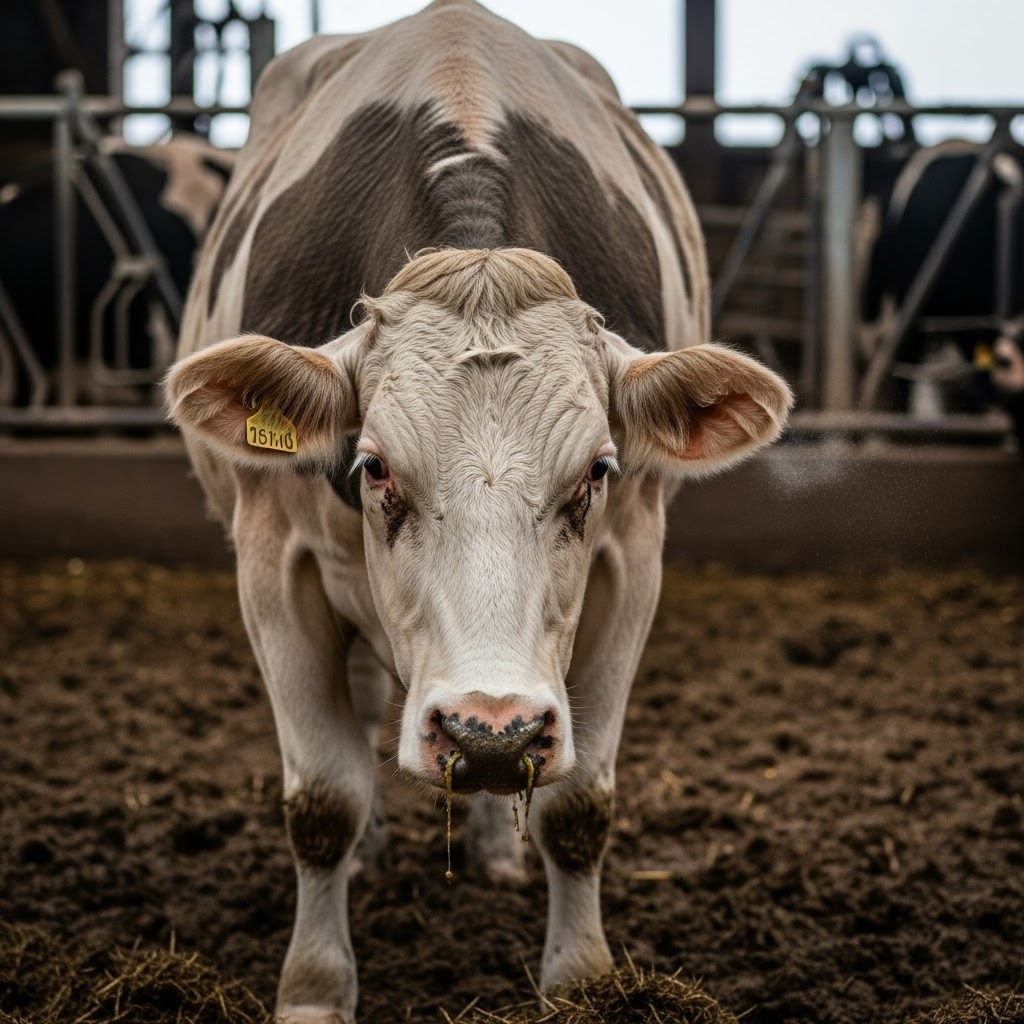Respiratory diseases are among the most economically significant health challenges in young calves worldwide. Bovine Respiratory Disease (BRD), also called respiratory disease complex, is not a single disease but a multifactorial syndrome caused by the interplay of pathogens, environmental stressors and immune suppression. BRD is considered the leading cause of morbidity and mortality in pre-weaned calves and a major factor in reduced growth performance and productivity.
Causes and Risk Factors
The etiology of BRD is multifactorial, involving pathogens and management conditions:
- Viral pathogens: Bovine respiratory syncytial virus (BRSV), bovine herpesvirus-1 (IBR), bovine parainfluenza virus-3 (PI3) and bovine viral diarrhea virus (BVDV).
- Bacterial pathogens: Mannheimia haemolytica, Pasteurella multocida, Histophilus somni, Mycoplasma bovis.
- Environmental stressors: Poor ventilation, overcrowding, extreme temperatures, transport and nutritional deficiencies.
- Immune suppression: Colostrum deprivation, stress, or concurrent diseases such as diarrhea.
Pathogenesis and Clinical Signs
The disease begins when stress and viral infections compromise the respiratory mucosa, allowing bacterial pathogens to proliferate in the lungs. The resulting inflammatory response leads to pneumonia, fibrinous exudates and respiratory distress.
Clinical signs include:
- Coughing and nasal discharge
- Fever and anorexia
- Depression and reluctance to move
- Rapid or labored breathing (dyspnea)
- Reduced weight gain and growth rate
Herbal Approach to Respiratory Health
Ayurvedic and polyherbal formulations are gaining attention as supportive interventions in livestock respiratory health. Herbs with expectorant, mucolytic, bronchodilatory and immunomodulatory properties can help manage respiratory infections naturally.
A Natural Solution for Respiratory Disease Support
CUFCRIL electuary is a scientifically designed polyherbal phytobioactive formulation for the management of cough, cold and respiratory infections in livestock. Its unique herbal synergy provides both symptomatic relief and immunomodulatory support.
Benefits of CUFCRIL
- Improves respiratory immunity – strengthens the animal’s defense against viral and bacterial infections.
- Prevents respiratory disorders – works as a supportive therapy in bronchitis, tracheitis, and pneumonia.
- Provides quick relief from cough, nasal discharge and respiratory discomfort.
- Safe for all age groups and pregnant animals – no withdrawal period, making it farmer-friendly.
Conclusion
Respiratory Disease in calves is a major health and economic challenge for the dairy industry. While conventional measures like vaccination and antibiotics remain important, they are often insufficient due to complex etiology and emerging drug resistance. Natural phytobioactive formulations like CUFCRIL provide an effective supportive solution by enhancing respiratory immunity, relieving symptoms and promoting recovery. Integrating such safe, herbal approaches with good management practices offers a sustainable strategy to safeguard calf health and improve dairy profitability.
References
- Griffin, D. (2010). Bovine respiratory disease: Pathogenesis, clinical signs, and treatment. Vet Clin North Am Food Anim Pract, 26(2), 257–272.
- Cusack, P. M. V., McMeniman, N., & Lean, I. J. (2003). The medicine and epidemiology of bovine respiratory disease in feedlots. Anim Health Res Rev, 4(2), 141–162.
- Taylor, J. D., Fulton, R. W., Lehenbauer, T. W., Step, D. L., & Confer, A. W. (2010). The epidemiology of bovine respiratory disease: What is the evidence for predisposing factors? Vet J, 181(2), 121–131.
- Dunn, T. R., Ollivett, T. L., Renaud, D. L., Leslie, K. E., LeBlanc, S. J., Kelton, D. F., & Duffield, T. F. (2018). The effect of respiratory disease on lifetime productivity of dairy heifers. J Dairy Sci, 101(6), 5408–5418.
- Woolums, A. R., Berghaus, R. D., Smith, D. R., White, B. J., Engelken, T. J., Irsik, M., … & Smith, R. A. (2015). Producer survey of herd-level risk factors for nursing beef calf respiratory disease. Vet Clin North Am Food Anim Pract, 31(1), 97–110.
Disclaimer: This blog is intended for educational purposes. Consult a qualified veterinarian for diagnosis and treatment protocols.
